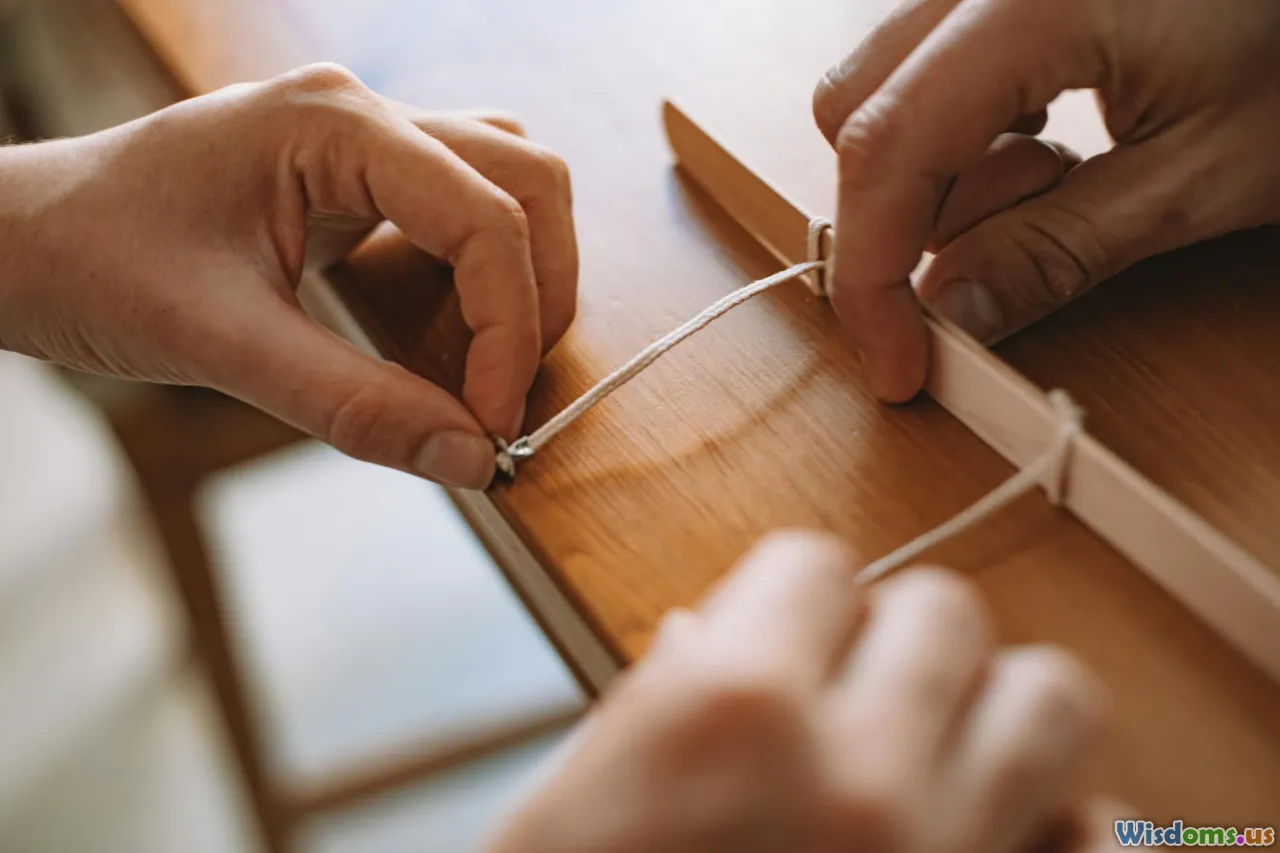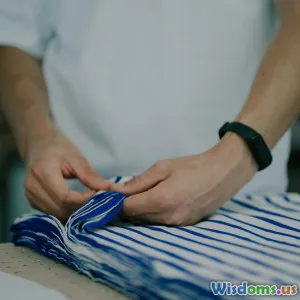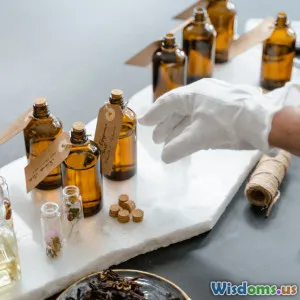
Why Your Macrame Projects Keep Failing Expert Troubleshooting Tips
8 min read Discover why your macrame projects often fail and learn expert troubleshooting tips to craft beautiful, flawless designs every time. (0 Reviews)
Why Your Macrame Projects Keep Failing: Expert Troubleshooting Tips
Macrame has become a favorite craft for DIY enthusiasts, blending artistry with hands-on creativity. However, many crafters—especially beginners—often find their macrame projects falling short of expectations. Whether it's loose knots, uneven patterns, or unsatisfactory textures, repeated failures can be frustrating. But what if you could systematically troubleshoot these common issues and elevate your macrame work from flawed to fabulous?
In this in-depth article, we explore common reasons your macrame projects falter and provide expert tips to help you fix them. By the end, you'll be equipped to create elegant, sturdy, and beautiful macrame pieces that impress.
Understanding Why Macrame Projects Fail
Before diving into fixes, it’s essential to identify where things typically go wrong. Below are some pervasive problems macrame artists face:
1. Inconsistent Tension and Knotting Technique
One of the primary causes of failure is uneven tension while knotting. Pulling some knots too tightly and others too loosely results in a wonky or asymmetrical final piece. Beginners usually struggle here because muscle memory and control develop with practice.
For example, Adriana, a craft blogger, says, "At first, my plant hanger looked like a messy spider web because I couldn’t regulate knot tightness. Once I learned to consistently gauge my knots’ tension, the design instantly improved."
2. Poor Choice of Materials
Using inappropriate cords or low-quality materials sabotages your project. Materials that fray, stretch, or are too slippery will break the continuity and integrity of your design.
For example, cotton cords with a smooth finish differ hugely from rough hemp or jute, affecting grip and texture. Not considering the cord thickness relative to your project size can also lead to awkward proportions.
3. Lack of Preparation and Planning
Jumping straight into knotting without mapping out your design can cause misaligned patterns, running out of cord, or size mismatches.
Knot patterns need to be planned in advance—inclusive of length, knot counts, and spacing—to maintain symmetry and balance.
4. Neglecting Tools and Workspace Setup
An unstable workspace or inadequate tools (like flimsy wooden dowels or unreliable clips) can interfere with your knotting accuracy.
5. Inadequate Practice and Patience
Macrame relies heavily on technique; rushing can lead to skipped steps or messy results. Without patience, troubleshooting becomes tough.
Expert Troubleshooting Tips to Save Your Macrame Projects
Being aware of common pitfalls is half the battle. Here are practical, actionable insights drawn from experienced macrame artists and craft experts.
Mastering Knot Tension and Technique
- Consistent Pull Pressure: Make a habit of pulling each knot with the same amount of force. Practice individual knots repeatedly before integrating them.
- Use a Swatch: Before starting your main project, tie a small sample swatch using the same materials and knots to test tension.
- Slow Movements: Speed often compromises control. Slow down to gain precision.
Choosing the Right Materials
- Select Appropriate Cord: For beginners, 3-5 mm cotton rope with a tight twist offers good grip and durability without excessive fraying.
- Consider Cord Type for Project Purpose: For outdoor projects, synthetic cords resist weather better. Indoor décor can utilize softer natural fibers.
- Buy Extra Cord: Buying 20-30% more than calculated prevents mid-project shortages.
Effective Planning and Design Preparation
- Sketch Your Design: Visual planning helps anticipate knot placement and design symmetry.
- Measure Twice, Cut Once: Accurate measurements ensure proper sizing.
- Follow Trusted Patterns: Use tutorials or patterns from reputable sources before attempting custom designs.
Optimizing Your Workspace and Tools
- Secure Your Work: Use sturdy dowels, macrame boards, or heavy clips to keep cords taut.
- Comfortable Setup: Adequate lighting and ergonomic seating reduce fatigue and errors.
- Keep Tools Handy: Scissors, measuring tape, and needles should be within immediate reach.
Developing Practice and Patience
- Start Simple: Master basic knots like the square knot or half hitch before moving to complex patterns.
- Allocate Uninterrupted Time: Avoid multitasking to maintain focus.
- Celebrate Progress: Document improvements to stay motivated.
Real-World Insights: How Experts Handle Macrame Challenges
Jane Thompson, a renowned macrame instructor based in Portland, shares, "Many students feel disheartened when their first macrame wall hangings look awkward. I always advise them to step back, analyze where the tension is uneven or knots are misplaced, and correct those zones before moving on. Understanding your materials intimately, such as how particular cords behave, is crucial."
Statistics from a craft community survey showed that 65% of beginners abandoned macrame projects due to frustration with knot tension and cord issues, underscoring the importance of mastering fundamentals.
Conclusion: Transform Failures into Stunning Successes
Failing macrame projects aren’t a sign of inadequacy—they’re part of the learning process. By recognizing common stumbling blocks and applying expert troubleshooting techniques like consistent knot tension, choosing quality materials, planning carefully, optimizing your workspace, and cultivating patience, you can drastically improve your results.
Remember the words of craft expert Lenora Bates: "Every tangled thread holds the potential of a masterpiece if unraveled with care and knowledge."
With practice and mindful application of these tips, your next macrame piece will not just succeed—it will shine.
Ready to untangle your macrame woes and start crafting beautiful designs? Grab your cords, prepare your tools, and let this expert advice guide your creation!
Additional Resources
- Macrame Knotting Techniques Guide
- Beginner-Friendly Macrame Patterns
- Choosing the Right Macrame Cord
By investing time in understanding and troubleshooting your macrame process, you’re setting yourself up for long-term creative success. Happy knotting!
Rate the Post
User Reviews
Popular Posts




















